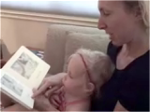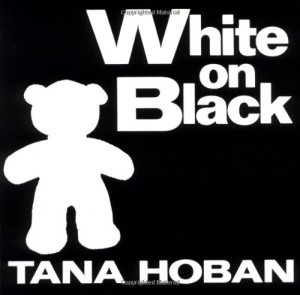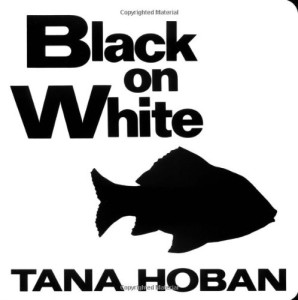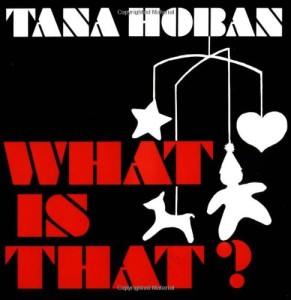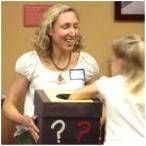- Touch each word as you read to your child to emphasize that each is separate and unique. Emphasize that you are reading from left to right to teach directionality.
- Put objects that all begin with the same letter sound in a bag or box. Have your child pull them out. Say each object’s name emphasizing its beginning sound. For example, cat begins with the |c| sound just like cow. Then let them pull out more objects that make the same sound.
- Frequent the library. Help your child pick out books that they are interested in and age appropriate. This shows them how much you value reading. Let them see you reading your favorite books too.
- Play rhyming games. This can be great fun on road trips or walking outings together. For example, you might say, “I saw a cat on a mat with a _____. ” Let them fill in the blank. There are no wrong answers in this game, except the sillier the better including nonsense words!
- When you teach letter names, use letters that are lowercase because this is what they will see in books. Save capital letters until after they’ve mastered the lowercase. You can find a set of lowercase letters at a teacher’s supply store.
Archives For reading for infants
My daughter was sick for the past two days. As we were snuggled in bed, my eight-year old who has been reading independently since age two, asked, “Will you read to me, Mommy?”
Her request immediately brought back memories of her younger days sitting on my lap as I read favorite stories to her. In part through those experiences, we developed a close bond as I helped cultivate my early reader.
Here are a couple favorites that your infant, toddler or preschooler might enjoy hearing you read as you snuggle:
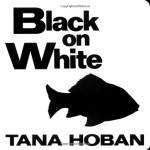 For your infant up to age 6 months. As an infant, my daughter loved to have me read and act out Peek-a Book by Janet Ahlberg. This story takes your infant from breakfast to bedtime with opportunities to play peek-a-boo in each of the book’s scenes. Another great book for this age is Black on White by Tana Hoban. Using this book, you can share familiar shapes with your baby, talk about each picture to expand vocabulary and have fun together.
For your infant up to age 6 months. As an infant, my daughter loved to have me read and act out Peek-a Book by Janet Ahlberg. This story takes your infant from breakfast to bedtime with opportunities to play peek-a-boo in each of the book’s scenes. Another great book for this age is Black on White by Tana Hoban. Using this book, you can share familiar shapes with your baby, talk about each picture to expand vocabulary and have fun together.
For your infant at age 6 to 12 months. I Can by Helen Oxenbury focuses on body awareness. Have fun with your infant as you explore her world as the baby in the story jumps, stretches and dances throughout this book. Where’s Baby by Tom Paxton is a great book for your little animal lover. In this book, a kitten searches for its friend the baby. The fun rhyming text provides a playful twist on hide-and-seek as you enjoy the book’s beautiful artwork together.
(For more suggestions to cultivate your early reader as an infant, please see my First Year blog series that starts with Month 1: Your Child’s Journey to Early Reading)
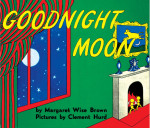 For your toddler to age two. Ingrained in my memory is Margaret Wise Brown’s Goodnight Moon. My husband and I must have read this all time favorite a 1000 times at our daughter’s request for a bedtime story. In this classic, mother bunny takes baby bunny through all the rituals of getting ready for bed. This incredible book will help encourage your child’s bedtime rituals. Next, The Itsy Bitsy spider by Lorianne Siomades beautifully illustrates this classic rhyme in a way that your active toddler can act out. Your child will practice motor control with her fingers as she follows the rhyme with you and sings the lyrics.
For your toddler to age two. Ingrained in my memory is Margaret Wise Brown’s Goodnight Moon. My husband and I must have read this all time favorite a 1000 times at our daughter’s request for a bedtime story. In this classic, mother bunny takes baby bunny through all the rituals of getting ready for bed. This incredible book will help encourage your child’s bedtime rituals. Next, The Itsy Bitsy spider by Lorianne Siomades beautifully illustrates this classic rhyme in a way that your active toddler can act out. Your child will practice motor control with her fingers as she follows the rhyme with you and sings the lyrics.
(For more toddler book recommendations, please see my article Top five board books! The most chewed list for your early readers!)
For your preschooler. The Story of Babar by Jean de Brunhoff is a favorite from my childhood, and for my preschool students. In this classic story, a brave little elephant, Babar, escapes the capture of hunters who kill his mother. Alone, Babar heads to the city where a kind old lady educates him. Wiser, Babar returns to the great forest where he is crowned king of the elephants. Another favorite is The Three Billy Goats Gruff by Paul Galdone, Caldecott-honored artist. Paul Goldone’s illustrations make this book amazing. When I read this aloud, my preschoolers love this story because it invites the reader to use dramatic expression and tone-of-voice. My preschoolers beg me to read the story again and again.
(For more preschooler book recommendations, please see my article Julie’s Recommends New Books for your Preschool Reader.)
These are a few of my favorite books that your infant, toddler or preschooler might enjoy hearing you read aloud.
What are some books your child enjoys hearing read aloud?
I was so happy to read the American Academy of Pediatrics’ public announcement: “Reading aloud to your child starting at birth is important.”
Why is it important?
First, the first three years of life is one of the most important times for healthy brain development. Reading aloud has a significant effect on that development.
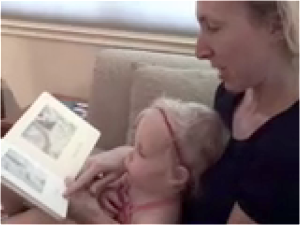 Second, reading aloud noticeably increases vocabulary development. It teaches other important communication skills like voice intonation and facial expression changes to demonstrate nonverbal communication cues.
Second, reading aloud noticeably increases vocabulary development. It teaches other important communication skills like voice intonation and facial expression changes to demonstrate nonverbal communication cues.
Third, reading aloud increases pre-literacy skills, like listening comprehension, which will help your child succeed once formal school begins.
What are some of your favorite books to read aloud?
“This is the first time the AAP has called out literacy promotion as being an essential component of primary care pediatric practice. Fewer than half of children are being read to every day by their families, and that number hasn’t really changed since 2003. It’s a public health message to parents of all income groups, that this early shared reading is both fun and rewarding.”
At month four, your child is beginning to develop a sense of herself, and how she relates to the world around her. She demonstrates this by smiling, communicating, reaching out, and engaging in activities.
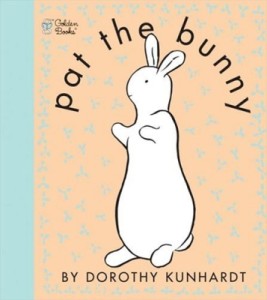 Through some wonderful books, you can help your child explore the world through touch and sound. They may make sounds – like crunching – or have rough or smooth surfaces to touch.
Through some wonderful books, you can help your child explore the world through touch and sound. They may make sounds – like crunching – or have rough or smooth surfaces to touch.
In the classic Pat the Bunny by Dorothy Kunhardt, the brother and sister in the story get to pat the soft bunny or touch Daddy’s scratchy face. This was my daughter’s longtime favorite. She loved looking at herself and making faces in the book’ mirror. As my daughter grew older, she would rub my husband’s face in the morning, and chuckle with a smile, “Scratchy face.”
On The Farm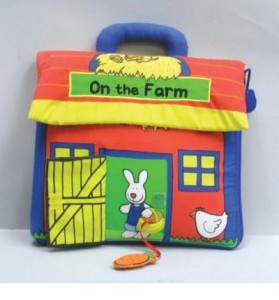 by Dana V. Swartz (Author) and Francesca Ferri (Illustrator), was my daughter’s favorite interactive, fabric book. In this book, your child gets to turn each fabric page. As the story unfolds, she puts items in her little fabric basket attached to the book – an egg from the hen’s nest or an apple from the apple tree. I would ask my daughter, “Where is the apple in the tree?” She would reach for it. Because your child now has a greater sense of herself, she starts to become interested in real life images of everyday items and animals. Along the way, the story provides great opportunity to build language and vocabulary.
by Dana V. Swartz (Author) and Francesca Ferri (Illustrator), was my daughter’s favorite interactive, fabric book. In this book, your child gets to turn each fabric page. As the story unfolds, she puts items in her little fabric basket attached to the book – an egg from the hen’s nest or an apple from the apple tree. I would ask my daughter, “Where is the apple in the tree?” She would reach for it. Because your child now has a greater sense of herself, she starts to become interested in real life images of everyday items and animals. Along the way, the story provides great opportunity to build language and vocabulary.
My Best Friends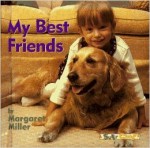 by Margaret Miller has beautiful photos of children and their pets. Each page has a simple picture with one word on the page. For example, the page for “hugging” has two children hugging their pets. As we read this book, my daughter would hug her favorite stuffed animal.
by Margaret Miller has beautiful photos of children and their pets. Each page has a simple picture with one word on the page. For example, the page for “hugging” has two children hugging their pets. As we read this book, my daughter would hug her favorite stuffed animal.
These books will help you engage your child’s emerging developing sense of self.
What books did your child love at this age?
Links to Earlier Months: Your Child’s Journey to Becoming an Early Reader
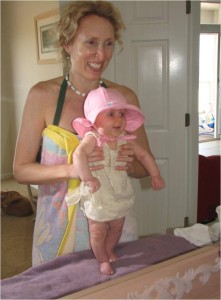 At month three, your child is beginning to understand that certain words sound like their meaning. This makes songs like “Pop goes the Weasel” great fun because your child begins to learn that when you say the word “pop” that it means going up in the air.
At month three, your child is beginning to understand that certain words sound like their meaning. This makes songs like “Pop goes the Weasel” great fun because your child begins to learn that when you say the word “pop” that it means going up in the air.
This leads me to a great game to play with your child called the “pop” song! It cultivates your child’s new developing love for surprises. Simply sing the song, “Pop goes the Weasel.” Begin by clapping when you sing the word “pop” to emphasize its importance.
Next, you can use a favorite stuffed animal to pop up as you say the word “pop”. Finally, you can use your child to pop up as you say the word “pop”. As you do, replace the words “the weasel” with her name: “Pop goes Bella.” While you do this change your tones from deep to high to help your child focus on the different pitches and sounds in the words.
Your child will also enjoy seeing herself in the mirror while you play this game. She will love seeing your expressions, learning to read your facial expressions while modeling her own. She will learn from you the art of non-verbal communication.
This simply game is fun to play with your three-month-old while teaching her the important skill of words sounding like what they mean.
What are some activities you like to do with your three-month-old to encourage language skills?
One of my favorite activities with Bella at two months was singing to her. I only sing so well but she didn’t seem to mind.
She especially loved to listen to nursery rhymes. This was great for me, too. I could get her to engage physically with me. She would lift up her head while on her tummy or track me with her eyes as I changed pitches to her favorite rhymes that we sang over and over again.
Often times I would add hand puppets for her to visually track. I would act out a song, such as Humpy Dumpty Had A Great Fall, moving the puppets up and down, or London Bridge is Falling Down as I sang the words.
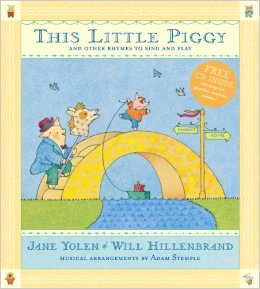 One of our favorite CD/book combinations was This Little Piggy by Jane Yolen and Will Hillenbrand. It was great for acting out the songs. It included lots of rhyming and is entertaining in general. I would prop her up on my lap and move her body to the rhythm of the song and the beats of the music.
One of our favorite CD/book combinations was This Little Piggy by Jane Yolen and Will Hillenbrand. It was great for acting out the songs. It included lots of rhyming and is entertaining in general. I would prop her up on my lap and move her body to the rhythm of the song and the beats of the music.
Rhyming is the beginning stage to learning how to read. Nursery rhymes are a great way to engage your child in this process while setting the foundation for later days when she will be reading. A great example of how you can get your two-month-old ready for reading.
What are some ways you engage your two-month-old to help get them reading ready?
I remember the days of beginning to teach Bella to read. Friends would ask me when I planned to start my early reading intervention. I would reply that I was starting now. They would say, but she is only one month old; what can you do at such as early age?
We started at one month and one of Bella’s favorite activities was looking at black-and-white picture books as I talked about the different objects on the pages.
I would prop her up on her Boppy pillow, show her each page, and talk about what I saw. “Look at the zebra!” or “There’s a bunny.” She seemed to enjoy this exchange and was eager to look at these books again and again.
The beauty of this experience was not only the bonding time together, but also the vocabulary and language skills that we were building by reading the same book over and over and talking about the pictures.
Babies visualize better in black-and-white and high-contrast until they reach about 3 months of age. The author of three black-and-white contrast books that we really love are by Tana Hoban.
This is an example of an activity that you can start with your infant as early as one month to build reading skills.
What are some of your favorite activities to engage your one-three month old?





